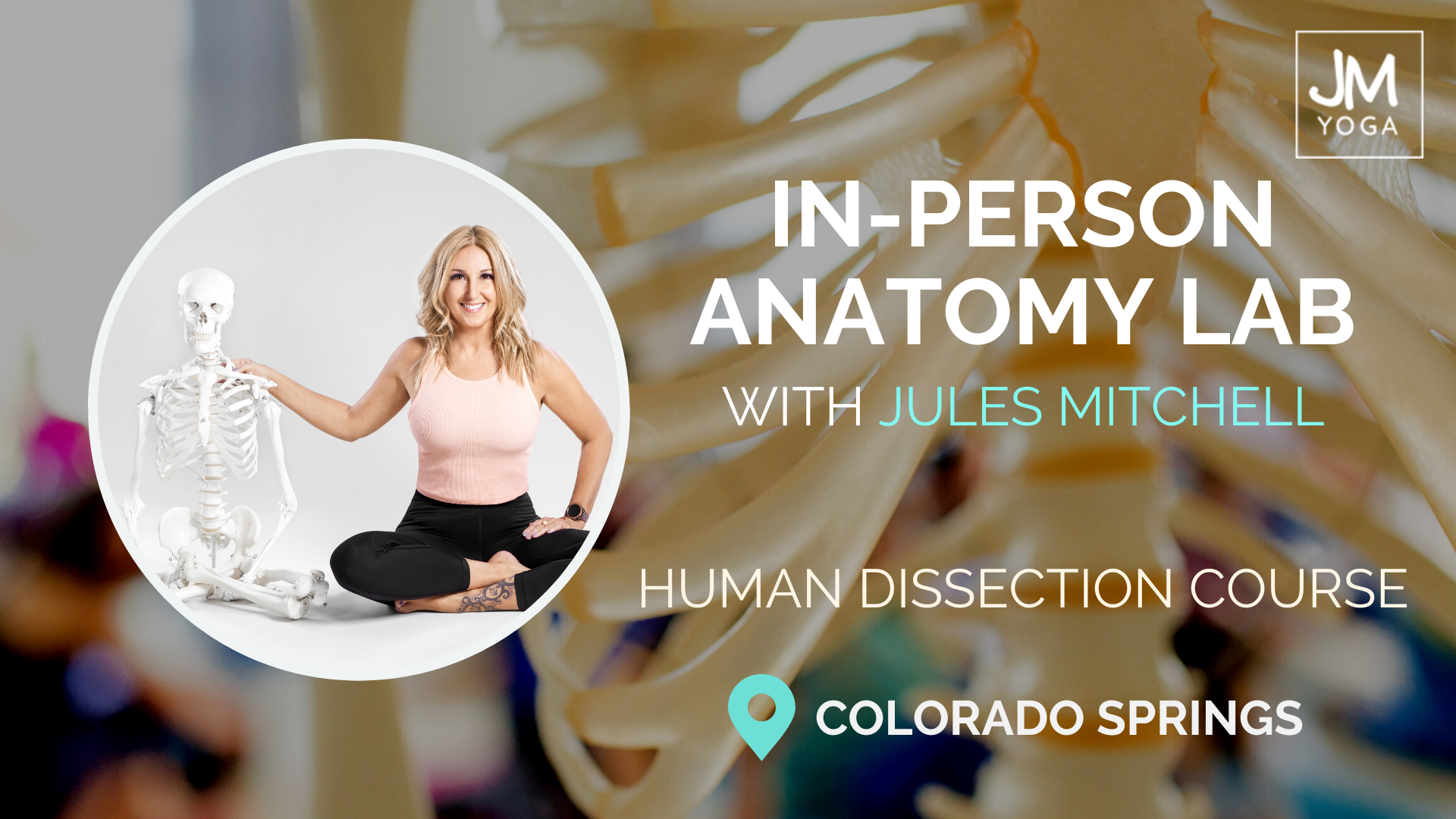Human Dissection Course For Yoga Teachers
I’m back with another lesson from the yoga anatomy lab. This time it’s about the plantar fascia – or as we decided to call it during this particular lab – the plantar tendon.
Anatomy Labs Are A Collaborative Learning Experience
In the anatomy lab, I often encourage my students to rename structures based on what they see. We look at the properties of tissues and start to wonder what is the goal or the function of that particular tissue. What I love so much about this particular un-learning lesson is that insights like these give you more confidence in your anatomical knowledge. Once you realize that anatomy nomenclature was decided by a particular authority, and there are other authorities with different perspectives, you realize you’re not necessarily getting it wrong. You’re just thinking about it from a different angle. As long as you can support your angle with reason and factual evidence, it’s fair game for debate. What a healthy learning environment!
In last April’s lab, we decided to unofficially rename the plantar fascia to the plantar tendon and here is why:
Renaming Structures for Better Understanding: Insights from the Anatomy Lab
Take the plantar fascia, for example, a well-known tissue located at the bottom of the foot. While commonly referred to in the context of plantar fasciopathy (previously called plantar fasciitis, perhaps more appropriately called plantar heel pain), the plantar fascia presents differently in terms of its mechanical properties. Fascia typically resembles a sheath, whereas tendons are more rope-like or springy.
When examining the plantar fascia, it reveals five rope-like structures extending from the calcaneus along the foot’s bottom, resembling tendons more than typical myofascia. This observation leads us to consider the plantar fascia’s role in foot mechanics, suggesting it might have springy, tendon-like qualities. Therefore, in the lab, we might rename it the “plantar tendon” to aid in our comprehension, even though this is not a formal change.
The lesson here: it’s not about getting the name right, it’s about what you learn when challenging the status quo. It’s okay to still call it the plantar fascia, now with a new understanding of the function of this tissue.
Anatomy Lab Intensives: Science In Action!
What experiences have you had in the yoga anatomy lab that can only be witnessed in person? And how have these experiences translated into being a more integrated yoga teacher? I’d love to hear from you.
Join me in a dissection course – get more info here.
Extend Your Learning: Anatomy Lab With Jules
HUMAN DISSECTION LAB
4 DAY ANATOMY LAB INTENSIVE
This course is for yoga teachers and committed students who wish to observe the mechanical properties of human connective tissue and get a visual and tactile sense of human movement.
Learn more >

